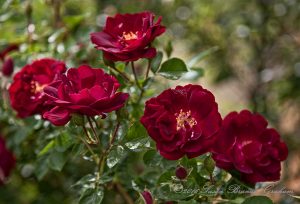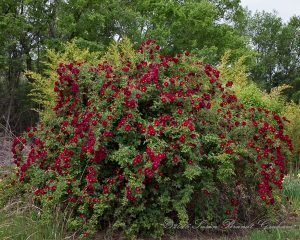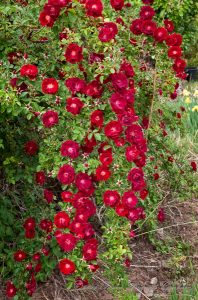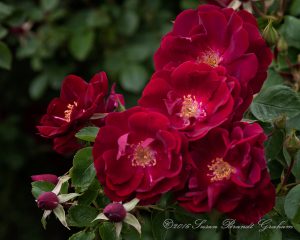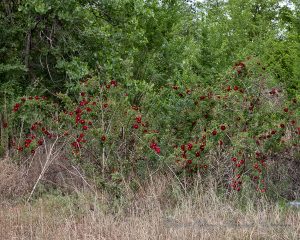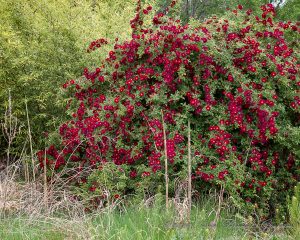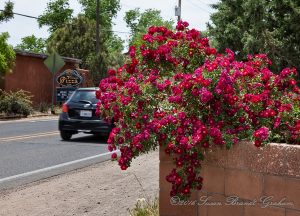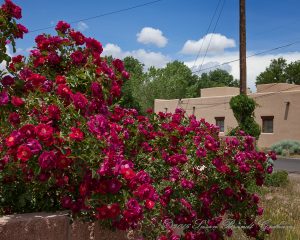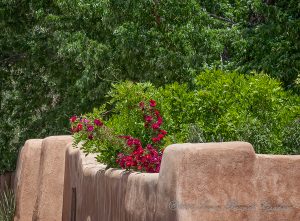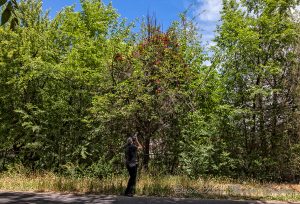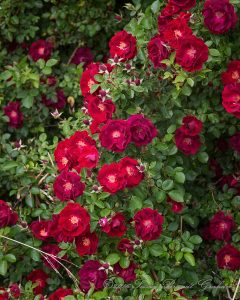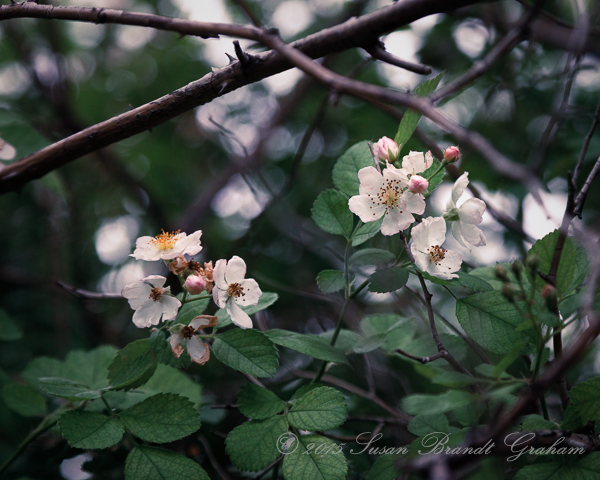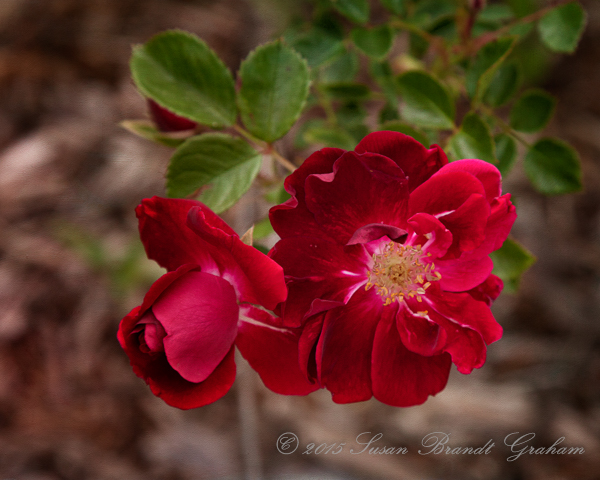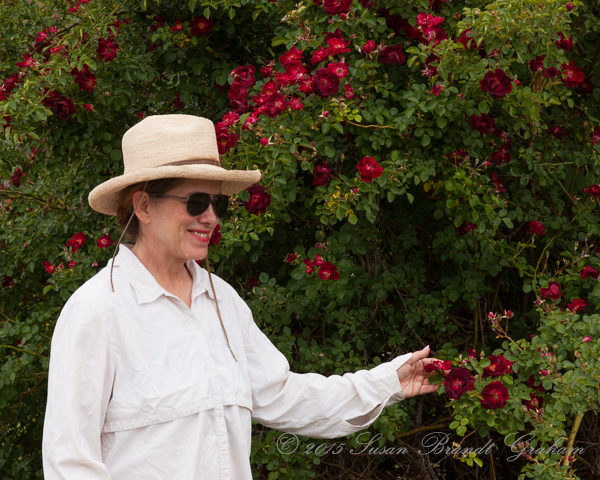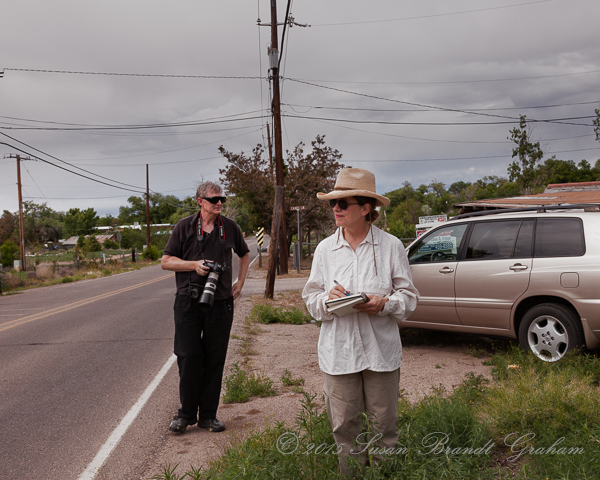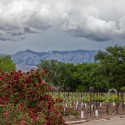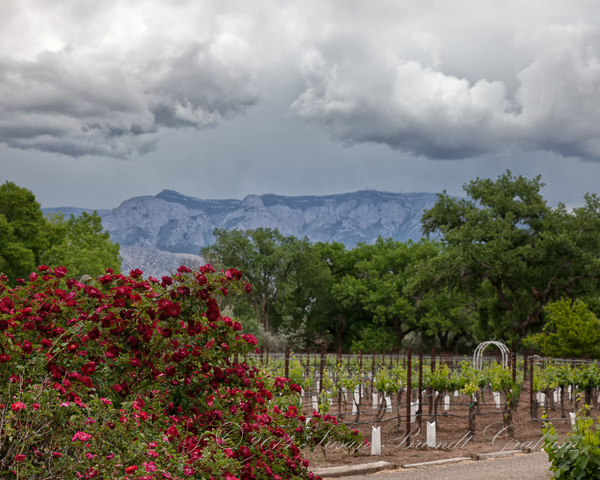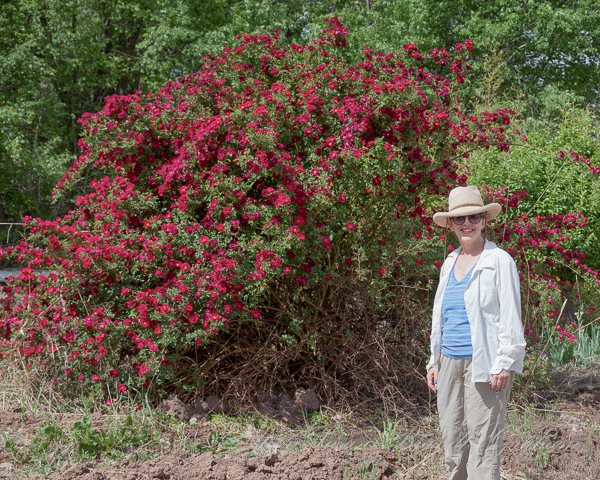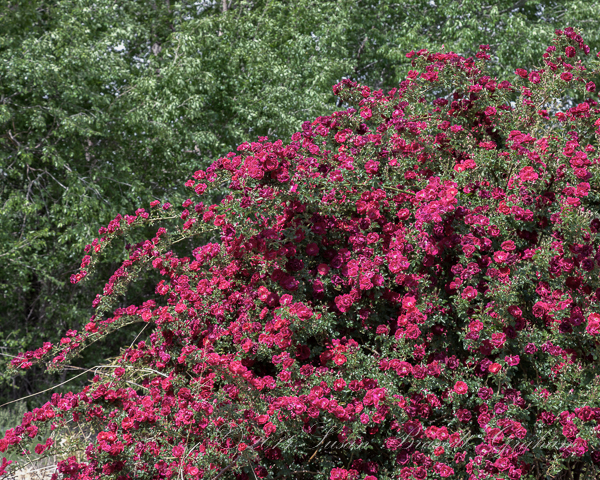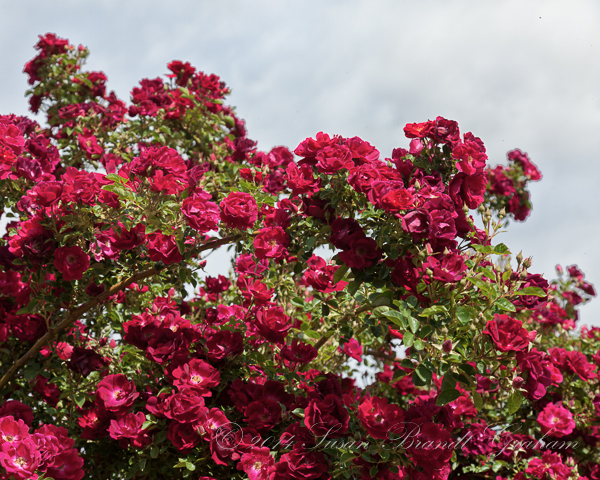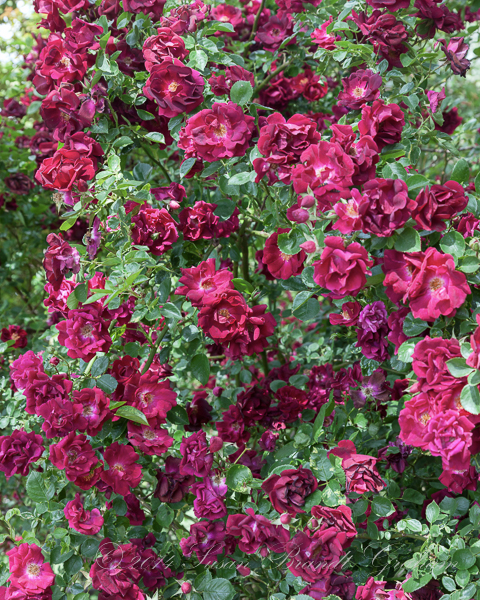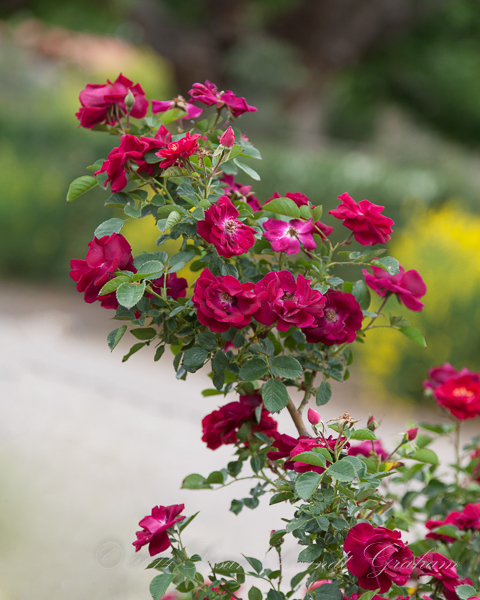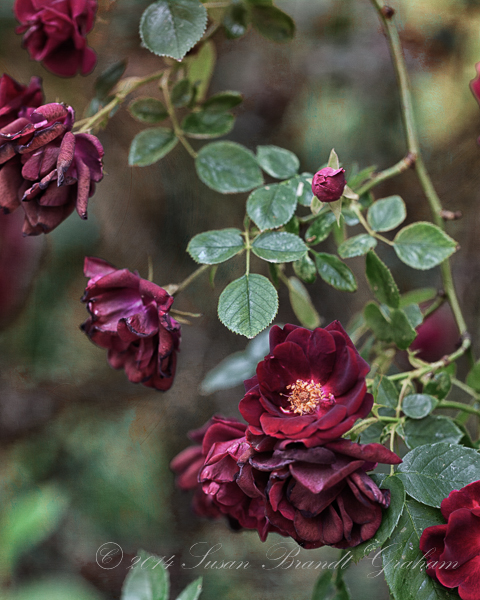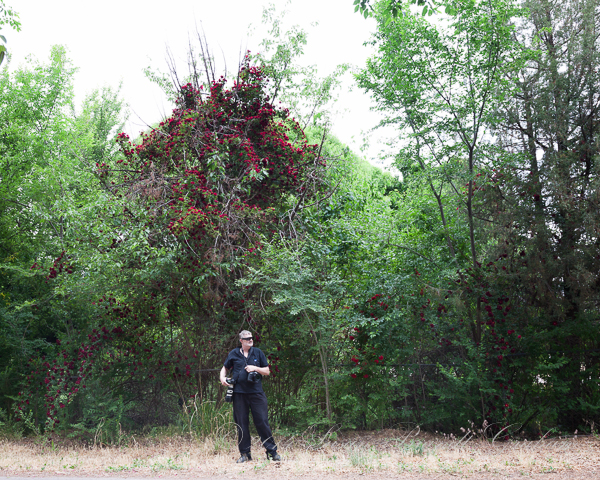Dr Huey, 2016
Dr Huey, 2016: The 3rd Annual Corrales Rose Society Dr Huey Tour
Dr Huey, know best among most rosarians as a common root-stock for grafted roses such as hybrid teas, floribundas, and many other classes of roses, may be seen in all of its own glory all over the Village of Corrales, New Mexico, for approximately one week in May. The Corrales Rose Society held its 3rd Annual Dr Huey Tour on May 15 this year, and the blooms were truly at their peak; the best overall I have ever seen them.
You may wonder why Corrales has so many of this hybrid wichurana, not usually planted for its own good qualities. Corrales sits on the river, here in the Middle Rio Grande Valley. You may recall from elementary school that “hot air rises, cold air sinks.” When I’m visiting friends in Corrales, even in the summer, if I am going to be there in the evening, I always take a jacket. Winter nights can get 10°-15°F colder than my location in Albuquerque. Corrales could be considered a “cold sink” and is just another example of one of many micro environments in the high desert.
People buy and plant grafted roses, and enjoy them as such while they are in that form. But many winters have killing freezes, often prolonged. In a desert area where winterizing of roses is rarely, if ever done, the grafted portion dies. In spring, the very hardy, alkaline-soil-thriving root-stock appears. The blooms are not at all unattractive, as you will see. People in the high desert tend to appreciate what grows and thrives, and most of these are kept. Some people keep them trimmed; some allow them to grown into their natural fountain shape; many allow them to cascade beautifully over walls; and one in particular has gotten quite huge!!!
I hope you enjoy these images as much as I enjoyed seeing the roses in person.
- Dr. Huey. Hybrid wichurana. May 15, 2016.
- Dr. Huey. Hybrid wichurana. May 15, 2016.
- Dr. Huey. Hybrid wichurana. May 15, 2016.
- Dr. Huey. Hybrid wichurana. May 15, 2016.
- Dr. Huey. Hybrid wichurana. May 15, 2016.
- Dr. Huey. Hybrid wichurana. May 15, 2016.
- Dr. Huey. Hybrid wichurana. May 15, 2016.
- Dr. Huey. Hybrid wichurana. May 15, 2016.
- Dr. Huey. Hybrid wichurana. May 15, 2016.
- Dr. Huey. Hybrid wichurana. May 15, 2016. With Tim Price
- Dr. Huey. Hybrid wichurana. May 15, 2016.

